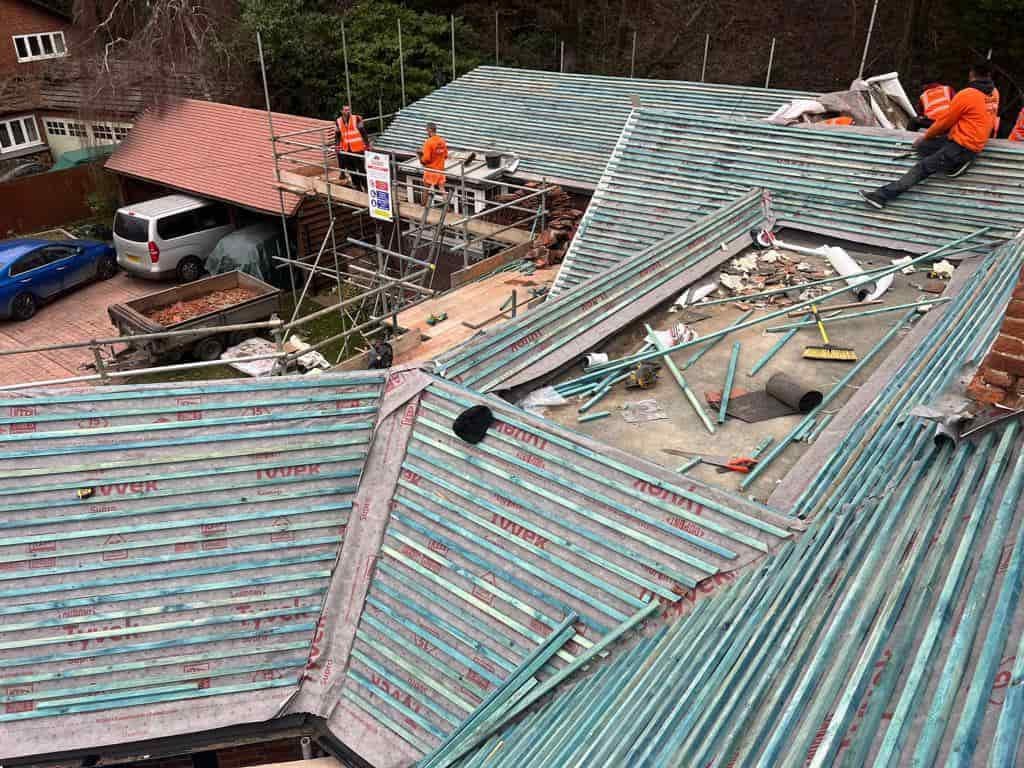Repairing Lead Flashing on Flat Roofs
Introduction: Flat roofs are popular for commercial and residential buildings due to their space-saving design and modern aesthetics. Proper flashing is essential to ensure a flat roof remains watertight and resilient against the elements. When installed correctly, lead flashing serves as a dependable barrier against water infiltration. However, like any roofing material, lead flashing can deteriorate over time and require repairs. In this blog post, presented by HJT Roofing Gainsborough, we’ll guide you through repairing lead flashing on flat roofs to maintain longevity and functionality.
1. Safety First
Before you begin any roofing work, prioritise safety. Ensure you have the appropriate personal protective equipment (PPE), such as safety glasses, gloves, and sturdy footwear. Use a stable ladder or scaffolding if necessary, and be cautious of electrical wires when working on the roof.
2. Inspection
Start by thoroughly inspecting the lead flashing to identify areas needing repair. Look for signs of damage, such as cracks, holes, or gaps in the flashing. Pay special attention to joints, corners, and areas around vents, as these are common trouble spots.
3. Cleaning
Clean the damaged area of the lead flashing using a wire brush or abrasive pad to remove any dirt, debris, or oxidation. This step is crucial to ensure proper adhesion of repair materials.
4. Patching Small Holes and Cracks
You can use a lead soldering kit for small holes or cracks in the lead flashing. Clean the damaged area thoroughly, then apply flux to the damaged area and the patch material. Heat the patch material with a propane torch until it’s pliable, then press it firmly onto the damaged area. Use a soldering iron to smooth rough edges and create a watertight seal.
5. Sealants for Larger Gaps
For larger gaps or holes, you can use a high-quality roofing sealant specifically designed for use with lead flashing. Clean the damaged area as previously described, and then apply the sealant generously, ensuring complete coverage of the damaged section. Smooth the sealant with a putty knife for a clean finish.
6. Reinforcement Strips
For added durability and strength, consider using lead reinforcement strips. These strips can be applied over the repaired area for additional support and protection.
7. Professional Assessment
If the damage to your lead flashing is extensive or you are unsure about the repair process, it’s wise to seek professional assistance. Experienced roofing contractors, like HJT Roofing Gainsborough, have the expertise and tools to assess the damage accurately and provide effective solutions.
Conclusion: Repairing lead flashing on flat roofs is a crucial aspect of maintaining the integrity of your roofing system. Whether you’re addressing minor cracks or larger gaps, repairing your lead flashing properly can extend the life of your flat roof and protect your property from water damage. Remember to prioritise safety and consult with professionals to ensure your flat roof remains secure and watertight for years.
Call us on: 01427 802 298
Click here to find out more about HJT Roofing Gainsborough
Click here to complete our contact form and see how we can help with your roofing needs.

